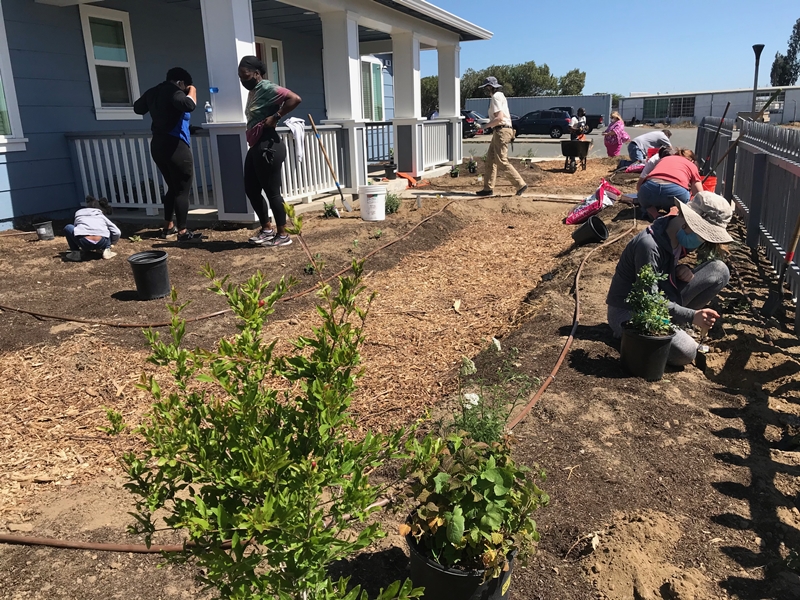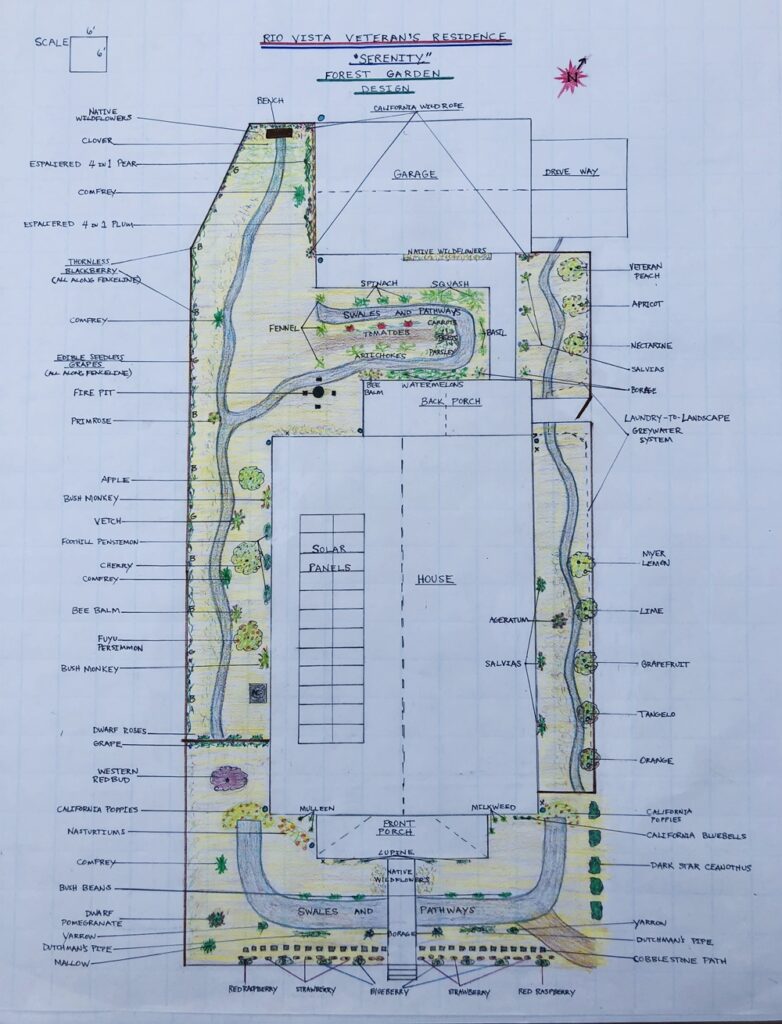Serenity Garden

Food Forest Keepers: Rio Vista Veterans Residence
The Rio Vista Veterans Residence was built by Solano Napa Habitat for Humanity in Rio Vista and is a permanent home for six formerly homeless veterans. Nancy, the architect for Habitat for Humanity, attended a private demonstration food forest tour in Benicia last year along with four other architects. She saw the potential in the Rio Vista yard and reached out to us to see if we would be interested in partnering. Mark Baides, Habitat for Humanity’s project manager during the construction of the Rio Vista Veterans Residence, also joined that meeting. We had previously worked with him on the Dixon Veterans Home. Through this initial meeting, the Rio Vista Veterans Residence was identified as a design project site. Further collaboration unfolded over a few months and a partnership was formed with Solano Napa Habitat for Humanity and Berkeley Food & Housing Project (BFHP), the organization that manages and provides support services to the home.
Site Details
Installation Date:
May 2021
Size:
5,880 square feet
Sun Exposure:
6-8 hours
Soil:
Sandy
Number of Swales:
6
Secondary Water:
Laundry-to-Landscape Greywater System
Rainwater
Roof water diverted to swales
Total annual water impact:
72,912 gallons
Plant List:
Apple, Apricot, Lemon, Lime, Pear, Plum, Pomegranate, Tangelo, Western Redbud
Blackberry, Blueberry, Ceanothus, Dwarf Rose, Lavender, Mallow, Raspberry, Rosemary
Artichoke, Bee Balm, Bush Monkey Flower, Comfrey, Fennel, Lupine, Marshmallow, Milkweed, Mullein, Penstemon, Savia, Yarrow
Nasturtium, Strawberry
Beets
California Wild Rose, Grapes
Installation:
During the installation we were made aware that spring is Rio Vista’s windy season. Every installation day was filled with so much wind that it felt like our thoughts were being taken out of our heads and thrown around in the air and brought back as jumbled fragments. The site was basically sand. The “sandy soil” was in desperate need of organic matter so we brought in 40 yards of compost and horse manure. We attempted to dig the compost in on a windy day in April and quickly realized that machinery was necessary. We reached out to the designer of our first seven demonstration food forest gardens, David Mudge. He has an excavator named Sunflower. David and Sunflower spent a very long day in mid-April mixing in the organic material. The thought was to bring in enough organic material to turn this sand into a foundation that could successfully grow thriving trees and plants.
Vision for the Future:
The hope is that the Serenity Garden becomes a place for the residents to heal and connect with each other while growing food and creating habitat for pollinators.


